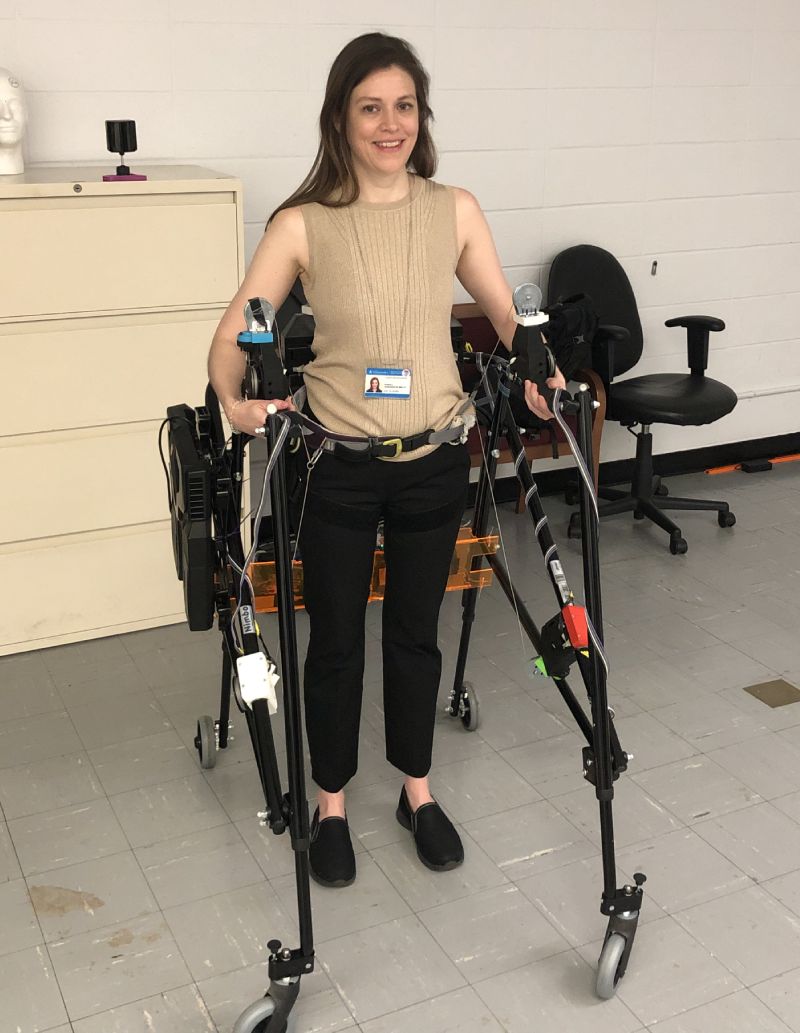Stroke is a leading cause of disability and mortality in the United States. One of the most common disabling symptoms in stroke survivors is hemiparesis, which is weakness and loss of motor control on one side of the body. As stroke rehabilitation substantially focuses on hemiparesis, the single best treatment therapy for it is exercise. A collaborative team of engineers and clinicians in the Department of Rehabilitation and Regenerative Medicine at NewYork-Presbyterian/Columbia have come together to investigate the interface of engineering and rehabilitation to augment exercise therapy in stroke patients with hemiparesis.
Our goal is to have the robotic device provide the right training environment and the right training signals to make exercises easier and more effective for patients, and thus enhance brain plasticity (re-wiring) to restore more normal walking.
— Dr. Joel Stein
“Fundamentally, robotic devices are a method of facilitating exercise therapy after stroke,” says Joel Stein, MD, the Physiatrist-in-Chief at NewYork-Presbyterian/Columbia. “Our goal is to have the robotic device provide the right training environment and the right training signals to make exercises easier and more effective for patients, and thus enhance brain plasticity (re-wiring) to restore more normal walking.”
People with stroke tend to favor their healthy side and do not put weight on their weak leg, as they should during stance of the weak leg, while leaning in the other direction, in turn contributing to their gait disturbance. By helping people normalize their weight shifting and trunk control, it may be possible to improve their gait efficiency and stability. To test this, the team has developed an overground robotic gait trainer focusing on trunk control and orientation to try and bring patients toward the midline. “What this particular device does is apply a pelvic force in a direction so that way the subjects actually experience more force on the weak leg. It is sort of forcing them to use the weak side of their body more than what they would normally do,” said Sunil K. Agrawal, PhD, a professor in the Department of Mechanical Engineering and Department of Rehabilitative and Regenerative Medicine at Columbia.
Drs. Stein and Agrawal recently completed a feasibility study to test the device in a group of stroke patients, and the results were published in Bioengineering in June 2023. The study included five stroke survivors with self-reported difficulty in walking but had the ability to walk without a cane or brace for 10 minutes. Each participant completed a single training session with the overground robotic gait trainer, mobile Tethered Pelvic Assist Device (mTPAD), which applies three-dimensional external forces on the pelvis that are synchronized with the participants' gait.

A Columbia staff member using the overground robotic gait trainer.
Each session began with a five-minute gait baseline, which was used to retrain the gait phase prediction model. The new prediction model was used in three sessions including: 10 minutes of lateral force, 10 minutes of downward force, and 5 minutes of minimized force.
Results from the study indicate that the use of an overground robotic gait trainer for stroke survivors is feasible and can increase weight-bearing and propulsive forces during gait. The application of lateral force resulted in increased overground gait symmetry, while the application of downward force increased the maximum relative pressure under the affected limb. Patients were able to tolerate the intervention and showed immediate effects.
One hour of training is, of course, not going to cure them. But what we were able to show from this study is that when you do force them to use their weak leg, then they actually bear more weight on it, and their walking becomes more symmetric.
— Dr. Sunil K. Agrawal
Further research is needed to test a prolonged paradigm where participants are studied in multiple sessions over time. While the optimal amount of exercise for stroke survivors is uncertain, programs of three times a week over the course of six to eight weeks have shown observable changes. The team is working to obtain funding to continue this research.




